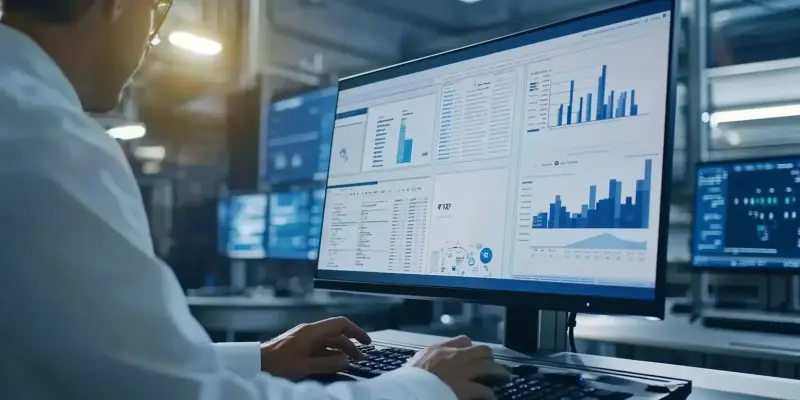Implementing a new Enterprise Resource Planning (ERP) system in a manufacturing environment is a challenging yet highly rewarding endeavor that can greatly enhance business efficiency and scalability. However, the path to successful ERP implementation is paved with complex hurdles that necessitate careful planning and strategic execution. This guide is designed to help engineers and manufacturing leaders navigate the intricacies of ERP system adoption, providing a comprehensive roadmap encompassing leadership and change management, data migration, testing and training, and post-implementation monitoring.
Leadership and Change Management
Effective change leadership is integral to the success of any ERP implementation. Appointing a popular and competent change leader can significantly ease the transition process. This leader’s primary responsibilities include fostering enthusiasm among employees, clearly articulating the long-term benefits of the new system, and ensuring transparent communication throughout the organization. The importance of a capable change leader cannot be overstated, as they play a pivotal role in guiding the organization through the chaos of ERP implementation.
Resistance to change is a common obstacle faced during any major organizational shift. For instance, Nestle’s attempt to consolidate its 29 different business units into a standardized ERP system experienced significant delays due to misalignment, resistance, and communication breakdowns. This example underscores the necessity of effective change management strategies to mitigate such issues. The change leader must work diligently to address resistance by promoting a positive attitude towards the transition and ensuring that employees understand the necessity and benefits of the new system.
Clear communication is paramount in this process. The change leader must ensure that all employees are well-informed about the rationale behind the new ERP system and how it will benefit the organization in the long run. This involves regular updates, open forums for questions, and promptly addressing concerns. By maintaining an open line of communication, the change leader can alleviate uncertainties and foster a supportive environment conducive to smooth implementation.
Data Management
Effective data management is a cornerstone of successful ERP implementation. This involves the careful mapping and migration of years of scattered project files, billing records, and financial data. To avoid overwhelming the system and users, it is imperative to prioritize critical data for migration. A cautious and methodical approach ensures that the data being transferred is both accurate and essential to the new system’s operations.
A phased approach to data migration is highly recommended, as highlighted by Hershey’s unsuccessful attempt at implementing multiple systems simultaneously. By rushing the process, Hershey faced significant setbacks and operational disruptions. In contrast, a phased data migration strategy allows manufacturers to mitigate risks and ensure manageable transitions. This approach involves breaking down the data migration into smaller, more manageable phases, allowing for thorough testing and validation at each step.
Ensuring data integrity is indispensable. Regular audits and validations during the migration process can help maintain data quality and reliability, preventing future complications. It is crucial to verify that the data being migrated is accurate, up-to-date, and free from errors. By maintaining high standards of data integrity, organizations can avoid costly mistakes and ensure that the new ERP system operates smoothly from the outset.
Testing and Training
Extensive testing is essential to the success of an ERP implementation. Each phased migration should be rigorously tested to identify and rectify issues before going live. This step is crucial for detecting potential problems and addressing them promptly, ensuring that the new system operates seamlessly. Rigorous testing also provides an opportunity to fine-tune the system, making necessary adjustments to enhance performance and functionality.
Employee training is paramount to the successful adoption of the new ERP system. Tailored training programs should be developed to cater to different roles and responsibilities within the company. It is crucial that everyone involved understands the rationale behind the changes to foster a positive attitude towards the transition. By providing comprehensive training, organizations can ensure that employees are well-prepared to navigate the new system and perform their roles efficiently.
Training should be ongoing, even after the initial implementation phase. As the new ERP system is introduced, continuous training sessions can help employees adapt to new processes and functionalities. This ensures that the workforce remains competent and confident in using the new system. Ongoing training also provides an opportunity to address any emerging issues and reinforce best practices, contributing to the long-term success of the ERP implementation.
Post-Implementation Monitoring
Implementing a new Enterprise Resource Planning (ERP) system in a manufacturing setting is a complex but highly rewarding project that can significantly boost business efficiency and scalability. The process is fraught with challenges that demand meticulous planning and strategic execution. This guide aims to assist engineers and manufacturing leaders in successfully navigating the complexities associated with ERP adoption. It provides a detailed roadmap that covers key areas such as leadership and change management, data migration, testing and training, and post-implementation monitoring.
Leadership and change management are vital for gaining employee buy-in and ensuring smooth transitions. Effective data migration ensures accuracy and integrity of information, while comprehensive testing and training mitigate risks and prepare staff for new workflows. Finally, post-implementation monitoring helps identify and resolve any issues that arise, ensuring the system operates optimally. By following this guide, manufacturing leaders can better manage the intricacies of ERP system implementation and greatly improve overall business operations.

